Everest Base Camp Trek is the most remarkable trek that a human can do. Yes, its glorious experiences make it the best of the best walk you can do here in Nepal. You will undergo numerous beautiful things while on the journey to the world's tallest mountain, and your heart will bounce with joy innumerable times. Thus, it is an elating feeling to welcome you on this fantastic journey with the squad of Mountain Rock Treks.
Let's dive into the explanation of the whole journey. As said at the start, Everest Base Camp Trek is an elite walk to the foothills of Mt Everest (8,848.86m), the highest mountain on the Earth. This journey takes you the closest to Mt Everest if you are not in the mood to climb it. Everest Base Camp high (5,364m), where Mt Everest's climb begins, will be the ultimate stop of the trek. Alongside, you will reach Kala Patthar(5,545m). These two points are just two of the highlights of the Everest Base Camp Trek. This trek has much to offer. The voyage of the Mount Everest base camp trek will start with a flight out of Kathmandu for Lukla. Upon landing in Lukla, the walk will begin by heading into the lush trails to Phakding. The first day of the tour has beautiful scenery.
Firstly, you will have enough mountain views while in the sky. Then trekking through Lukla to Phakding on the same day, you will come across the greenery of the Everest Region, the Dudh Koshi River, hanging bridges, and several Sherpa villages.
The next day, the trek happens via an even denser forest of Sagarmatha National Park, crossing the Dudh Koshi River and the bridges countless times. You will remain hooked by the natural diversity that the place has. More Sherpa villages will come along. This way, you end up in Namche Bazaar, the hub of the Khumbu Region.
From Namche Bazaar, the trek gets steeper, demanding but scenic. The glorious mountains finally seem clear and close. Next, you will walk via Tengboche Village, a village of the big monastery watching Ama Dablam to the fullest. After that, you will run into various busy Sherpa villages of the Mt Everest base camp trek, such as Dingboche, Lobuche, Pheriche, and more. Finally, you will have visions of the peaks like Mt Lhotse, Island Peak, Makalu, Cho Oyu, Mera Peak, Nuptse, Thamserku, etc.
Moreover, the route will share the inspiring lifestyle, culture, and stories of Sherpas, the Himalayan Heros. You will eat and sleep at their teahouses, knowing their philosophies about life. This trek will be a thought-changing experience of Everest Base Camp Trek. And these experiences will keep coming until you are in the Everest Region.
After trekking for more than a week in the picturesque Khumbu or Everest Region, enjoying the natural wonders of the place, and knowing the area's artistic side, you will finally arrive at Everest Base Camp. Everest Base Camp will bestow you with the stunning sights of Mt Everest, Lhotse, other adjacent peaks, and Khumbu glacier to thank you for trekking.
The next day, you will trek down Kala Patthar(5,545m), a must-visit view station of Mt Everest and other majestic peaks. Kalapatthar will feed your eyes with enough pictures of Mt Everest for the rest of your life. And this is where the long trek through Everest Region seems worth doing. You will have no regrets. Instead, you will enjoy the heavenly vistas and cheer with joy.

The journey back to Lukla will start following the visit to Kala Patthar and Everest Base Camp. You will trek via the same region, enjoying similar things once again. Due to more descending trails, the trek also becomes more accessible and quicker. Passing via Namche Bazaar, Phakding, and other villages, you will return to Lukla to complete the Everest Base Camp Trek distance of 130km. What a trek it will be! And taking a flight back to Kathmandu, you will sum up the once-in-a-lifetime experience trek.
In a nutshell, Everest Base Camp Trek is the ultimate trek for any avid trekker. This trek's adventures are like no other treks far out. It is a unique experience that has been the number one wish of adventurers around the globe for a long time.
Everest Base Camp Trek Highlights
- Namche Bazar and glorious views of the world's highest mountain
- Everest View Hotel
- Beautiful trail covered with rhododendron forests
- Gorgeous landscapes
- Tengboche Monastery
- Panoramic views of himalayas
- Stunning view of the world's highest glacier - Khumbu Glacier
Everest Base Camp Trek Packages cost for 2026-2027
You must know why you should opt for the Everest Base Camp (EBC) Trek itinerary. But here is something more you need to know as well. You can reach the roots of Mt Everest on various routes other than the standard Everest Base Camp. So here, we'll mention some of our other best Everest Base Camp Trek Packages 2025 | 2026 that lead to the base camp.
First, we have also been running Everest Trek Via Jiri, a classic trail to Mt Everest. The first use of this trek was by the early explorers of Mt Everest, including Tenzing Norgay and Edmund Hillary. It will be a chance to follow their footprints by adding more days to the EBC trek.
Likewise, Three High Passes Trekking is the ultimate trail around Everest. Along with Everest Base Camp, you will explore the region's three high mountain passes and more. Gokyo Chola Pass Trekking, another EBC option, is more like the three-pass trek. It reaches Gokyo Valley, Cho La Pass, and Everest Base Camp. These two packages are the perfect options for adventure and challenge lovers.
The Everest base camp trek cost is probably the most important thing for this trek. The Mount Everest Base Camp Trek packages 2026-2027 cost range from US$ 950 to US$1500 per person. It depends on the group joining members.
| Per Person | Cost |
| 1 - 1 pax | US $1100 |
| 2 - 3 pax | US $1075 |
| 4 - 6 pax | US $1050 |
| 7 - 10 pax | US $ 1035 |
There are two types of joining, Group Joining and Private Joining. In group joining, you will join a group of random trekkers. Whereas in private consolidation, you will have your people. The difference is shown below:
Group Joining Everest Base Camp Trek
On Group Joining Everest Base Camp Trek, you will join a group of trekkers like you across the globe. The group joining trek is economical and safer than the solo treks. In a group, you will share the journey and the cost of the guide for the Everest base camp trek, accommodation, and other expenses. And at the end of the expedition, you will save some bucks and make new friends.
Group Joining is the best option if you are a budget traveler in no group for Everest Base Camp Trek. The group joining Mount Everest Base Camp Trek costs USD 1075 per person. You can contact us and learn about the group joining EBC Trek.
Price of Everest Base Camp Trek for 2026-2027:
JANUARY …………… $ 1075 .……………………….. CHECK AVAILABILITY
FEBRUARY …………… $ 1075 ..……………………… CHECK AVAILABILITY
MARCH ..………… $1075 ..……………………… CHECK AVAILABILITY
APRIL ……………. $1075 …………………………. CHECK AVAILABILITY
MAY ……………. $1075 …………………………. CHECK AVAILABILITY
JUNE ……………. $1075 …………………………. CHECK AVAILABILITY
JULY ……………. $1075 …………………………. CHECK AVAILABILITY
AUGUST……………. $1075 …………………………. CHECK AVAILABILITY
SEPTEMBER ………… $1075 …………………………. CHECK AVAILABILITY
OCTOBER……………. $1075 …………………………. CHECK AVAILABILITY
NOVEMBER ……………. $1075 …………………………. CHECK AVAILABILITY
DECEMBER……………. $1075 …………………………. CHECK AVAILABILITY
Private Group Everest Base Camp Trek Cost 2026-2027
Private Group means you will do a trek with your group. Being in a group is a better option. Plus, you will get discounts on Everest Base Camp Trek costs. The more people in your group, the heavier the deal you will get. Nevertheless, you need at least two and 15 individuals in your group to get discounts. Private trip costs will depend on the customized itinerary too. It will start from USD 1075 to 1700 USD.
Everest Base Camp Trekking Permits Cost for 2026-2027
Everest Base Camp Trek 2025 and 2026 will require two trekking permits for you to join the journey. First, you must have a Khumbu Pasang Lhamu Rural Area Entry Permit for the Everest Base Camp Trek. It is a license to enter the restricted area in the region by the Nepal government. The permit costs NPR 2000 per pax.
Likewise, you will require a permit to enter Sagarmatha National Park. The Sagarmatha National Park Entry Permit permit costs NPR 3000 per pax. Again, we arrange these permits for our valued clients in advance—roughly 50 USD per person.
Best Time for Everest Base Camp Trek 2026-2027
Now, you've reached out to find the best time to do the trek. First, we'll tell you everything you need to know about the best times for doing Nepal Everest Base Camp Trek. Then, let's get straight into it.
Among all four seasons, Autumn and Spring are the two leading times for undoing the Everest Base Camp Trek map. These two seasons provide exceptional conditions for doing a trek. That is why these two are peak trekking seasons in Nepal.
However, Winter and Monsoons are a little tricky. The Everest Base Camp Trek difficulty level gets scaled due to the unstable weather conditions of the two seasons. Yet, it is entirely possible to trek in Winter and Monsoon. If you want to trek during these two times, we can guide you the right way. Just let us know.
For now, let's talk about Autumn and Spring individually.
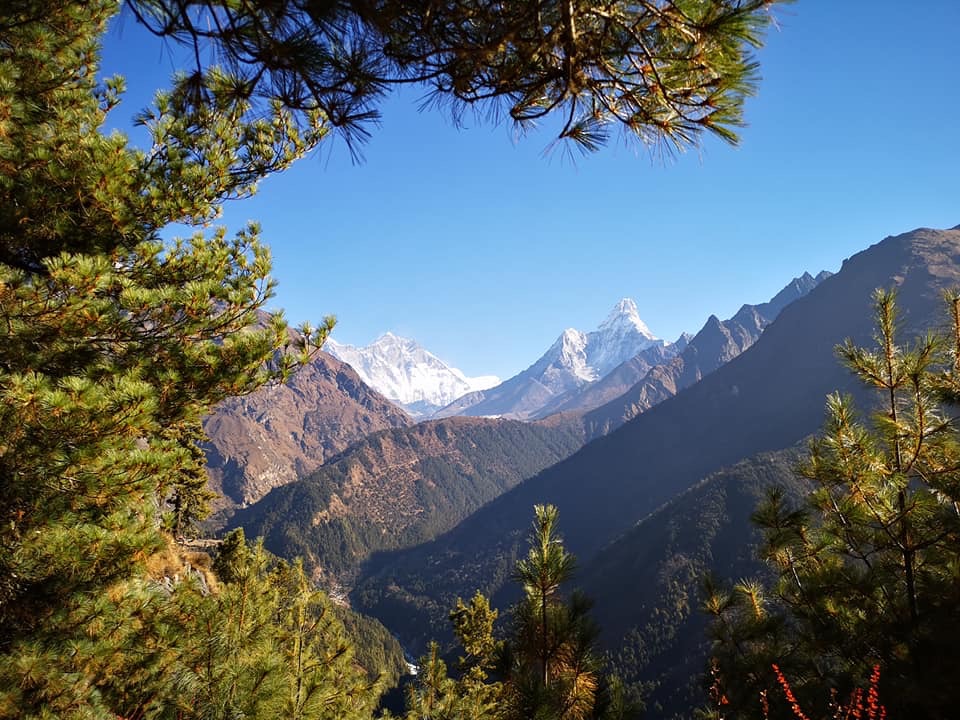
Everest Base Camp Trek in Autumn 2025 (September, October, November)
Autumn signals the beginning of a trekking season in Nepal. It will be in September, just after the end of the Monsoon. With the arrival of Autumn, Nepal's trekking routes start to get alive again. The rain-washed trails and landscapes are so good to see and enjoy. And the season continues until November.
Being a post-monsoon season, Autumn is a picturesque time to travel anywhere. And Nepal's Everest Region is the best place to enjoy the season's colors. You will get crystal-clear, snow-loaded sights of Mt Everest, Cho Oyu, Lhotse, and Ama Dablam. The varied landscapes of the region also shine brightly after the rainy season.
Moreover, Autumn in Nepal has the perfect temperature for trekking. You get a moderately warm climate to trek under the sun. The sun will brightly guide you on the trail during the day; however, the temperature drops during dark hours. Otherwise, Autumn is ideal weather for a walk in the Everest Region. Therefore, it is the best time for Everest Base Camp Trek.
Overall, Autumn is best for doing Everest Base Camp Trek. You will get the best conditions to enjoy the boundless beauty of the trek.
Everest base camp Trek in Spring 2026 (March, April, May)
Now let's talk about Spring, the second-best time for Everest Base Camp Trek. It begins in March and ends in May in Nepal. This season is a post-winter season, which means it arrives only after the departure of the coldest season. Thankfully, Winter leaves a considerable amount of snow in the mountains for the visitors to enjoy during Spring.
Other than snowy mountains, Spring is known for flowering Rhododendrons and other flowers. The trails of Nepal, which are with varied Rhododendrons, turn vibrant this season, becoming a great treat to the eyes. Similarly, Spring in Nepal has a warm temperature for hiking in the mountains. You'll love walking in a pleasant climate.
Moreover,Spring is an excellent time for Everest Base Camp Trek and treks like Everest Three High Passes Trekking, Gokyo Lake Trek with Renjo La Pass, and others. So you will get the best weather conditions for trekking in Nepal in Spring.
If Spring in Nepal is about to begin, don't wait for another one. Instead, book the Mount Everest Base Camp Trek for the upcoming Spring before it gets late.
Everest Base Camp Trek Difficulty Level in 2026
Most beautiful journeys are complex. That is why it is said difficult roads often lead to beautiful destinations. Everest Base Camp Camp Trek's route is one such road. The trail, however, can be easy-peasy for skilled and well-trained trekkers. Otherwise is a moderate-rated trek that has specific difficulties. Nevertheless, any trekker will experience them on the trail.
The complex parts of Everest Base Camp Trek are its total distance, the trail's nature, rough terrain, steep uphills, high elevations, and cold weather. However, if you complete the preparation, these complex parts become easy.
Altogether, you will trek for around 130km (80 miles). While trekking, you have to cross regular steep ups and rapid downs. The trail is rougher the higher you go. And the high elevation can slow and affect your body at times. Also, the harsh temperature during dark hours can be a hassle. Altogether, Everest Base Camp Trek is a demanding trek requiring specific training and preparation. If you have prior trekking experience, that is even better.
Everest Base Camp Trek Training for 2026
You must train hard for Everest Base Camp Trek, but you must be consistent. The EBC trek involves 5-6 hrs of a walk every day on a steep trail. So it would be best if you improve your physical endurance level for the daily walk or trek. Jogging, cycling, swimming, hiking, and running are some options. Similarly, add cardio training to your routine if you are a gym lover. And mental conditioning is also quite crucial for the trek. So make sure you prepare well. Doing all of these activities at least two months ahead of your trek day will make you a fit for it.
How many miles do we have to walk on the Everest Base Camp Trek?
Everest Base Camp Trek Distance is 130km (80 miles) if you start and end the trek in Lukla. The standard Everest Base Camp Trek's distance runs via Lukla, Phakding, Namche Bazaar, Tengboche, Dingboche, Gorakshep, Everest Base Camp Kala Patthar, and back to Lukla. On average, you will cover around 3 to 8km every day.
Food and Accommodation During Everest Base Camp Trek
Depending on your choice, you can have varied food and accommodation during EBC Trek. The trek is one of the most developed trails in the Himalayas. So you can expect essential luxurious food and a place on the expedition.
You will have a wide range of cafes, teahouses, and restaurants to serve you food. There you can have popular cuisines such as Chinese and Continental. Dal Bhat, a local recipe, is a must-try food for the trek. Moreover, you can expect pizza, pasta, noodles, spaghetti, dumplings, soup, eggs, etc. You will eat meals made by locals on fire, which taste mouthwatering.
Regarding accommodation, the standard of the places varies from the most basic to the lavish ones. You'll get plenty of accommodation options in most parts of the trek. However, the options may be limited and more minor in the higher parts of the region. Expect to have suitable lodgings while in Namche Bazaar, Phakding, and Tengboche than in the other sections of the trail. We recommend our Everest base camp luxury trek for better food and accommodation.
Best Everest Base Camp Trek Operating Companies in Nepal for 2026-2027
If you are looking for the best Everest Base Camp Trek companies, your search might end here. Mountain Rock Treks is a team of expert and experienced people guiding visitors around Nepal. Our Everest base camp packages are handcrafted to provide the best travel experience to the doers.
Similarly, we believe in tourism for everyone, responsible tourism, and eco-tourism. These beliefs make us unique in the crowd. Our highly competitive costs and discounts are worth considering. The local sherpas of our team will guide you to Everest Base Camp in a unique style. We can call ourselves one of the best Everest Base Camp Trek Companies. You can choose for all these real reasons.
Note:- If you think of an alternate option for This Tour, you might consider our Everest base camp trek return by helicopter. If you are short of a ten-day holiday, you can get 5 hours Everest base camp helicopter tour. If you are here for an anniversary trip, honeymoon trip, or Engagement trip, you can choose the Luxury Lodge Everest base camp trek. Probably, this will be a tweetable alternative trip for you.



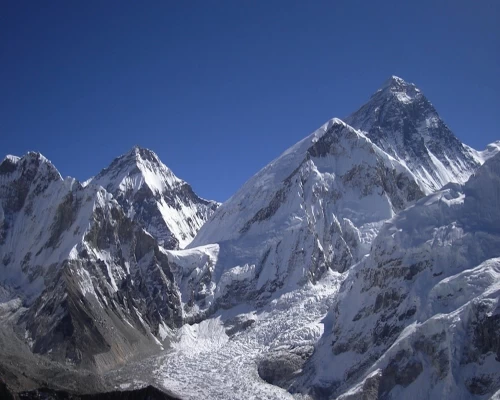
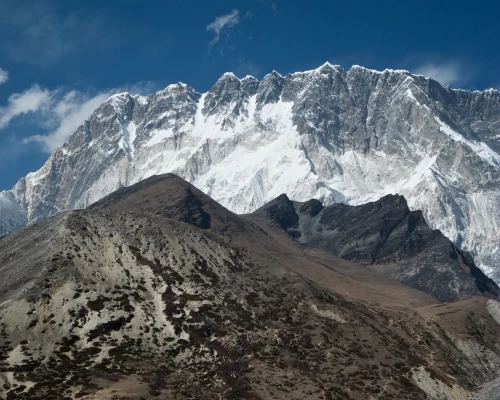
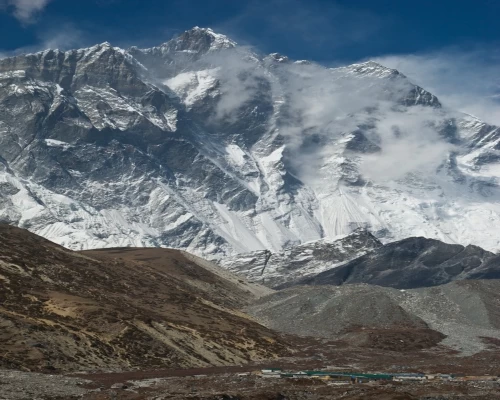
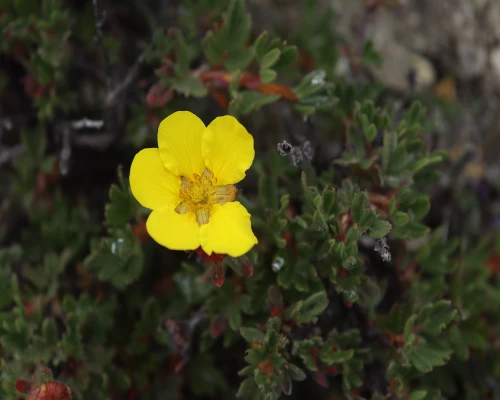










.jpg)




